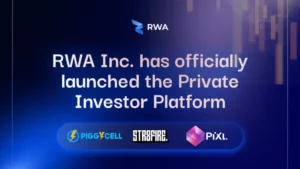
How Small Businesses Can Tap Into Technology: 20 Expert Tips
As the digital landscape continues to evolve at a breakneck pace, small businesses are under increasing pressure to stay ahead of the curve. However, many lack the resources and expertise to invest in cutting-edge technology. In this article, we’ll explore 20 expert tips on how small businesses can tap into technology without breaking the bank.
1. Automate Tasks With RPA: Robotic Process Automation (RPA) allows small businesses to automate repetitive tasks, freeing up employees to focus on high-value activities.
2. Focus On Digital Skills Training: Invest in training your existing staff with digital skills to reduce dependence on external consultants and IT teams.
3. Leverage Cloud Services: Move critical business functions to the cloud for scalability, reliability, and cost-effectiveness.
4. Build A Hybrid Model: Combine internal expertise with external partners or contractors for a hybrid approach that balances costs and expertise.
5. Invest In AI-Powered Tools: Use AI-powered tools to streamline operations, improve customer service, and optimize processes.
6. Develop Custom Solutions: Partner with freelance developers or small IT agencies to create custom solutions tailored to your specific needs.
7. Prioritize Cybersecurity: Small businesses are attractive targets for cyberattacks; invest in robust security measures to protect sensitive data.
8. Adopt AI-Driven Customer Engagement Platforms: Utilize platforms that utilize AI to improve customer engagement, personalize marketing efforts, and boost conversions.
9. Enhance Customer Experience With Chatbots: Implement chatbots that can handle routine inquiries, freeing up human staff for high-value tasks.
10. Explore Augmented Reality Opportunities: Leverage AR technology to enhance product demonstrations, training sessions, or even remote employee onboarding processes.
11. Maximize The Power Of Google Suite: Utilize Google Workspace (formerly G Suite) as a cost-effective alternative to Microsoft Office 365.
12. Prioritize Data-Driven Decision Making: Make informed decisions with the help of data analytics tools that can provide real-time insights.
13. Integrate APIs To Expand Functionality: Integrate your existing systems with third-party APIs to unlock new capabilities and streamline workflows.
14. Develop An IT Vision Statement: Establish a clear technology vision for your organization to ensure everyone is aligned on goals and objectives.
15. Focus On Digital Marketing Strategy: Shift your marketing efforts online, leveraging social media advertising, content marketing, and email marketing.
16. Utilize The Power Of Integration Tools: Integrate various tools like Google Drive with Microsoft Office 365 or CRM systems to create seamless workflows.
17. Invest In Cybersecurity Consulting Services: Hire external experts for one-off projects or on-demand support to ensure comprehensive security audits and compliance assessments.
18. Implement Cloud-Based Data Storage: Migrate sensitive data to cloud-based storage solutions for enhanced security, scalability, and cost-effectiveness.
19. Develop An IoT Strategy: Leverage the Internet of Things (IoT) to streamline operations, improve efficiency, and enhance customer experiences.
20. Monitor And Analyze Tech Trends: Stay ahead of emerging trends and developments by monitoring industry reports, attending webinars, and participating in online forums.
By following these expert tips, small businesses can harness technology to drive growth, increase efficiency, and improve their competitive edge without breaking the bank.
Source: www.forbes.com


